The New York Rangers have a vacancy on the left side of their third defense pairing going into the 2022-23 season. You wouldn’t know it, though, from listening to certain segments of the fan base.
Those often-loud voices have all but anointed Zac Jones as the obvious winner of that competition, the young offensive defenseman being the supposedly clear candidate to fill the spot next to second-year player Braden Schneider. Yet Jones’ path to the job is likely going to be much more challenging than that – and him winning it might unfortunately not give the Rangers their best possible roster.
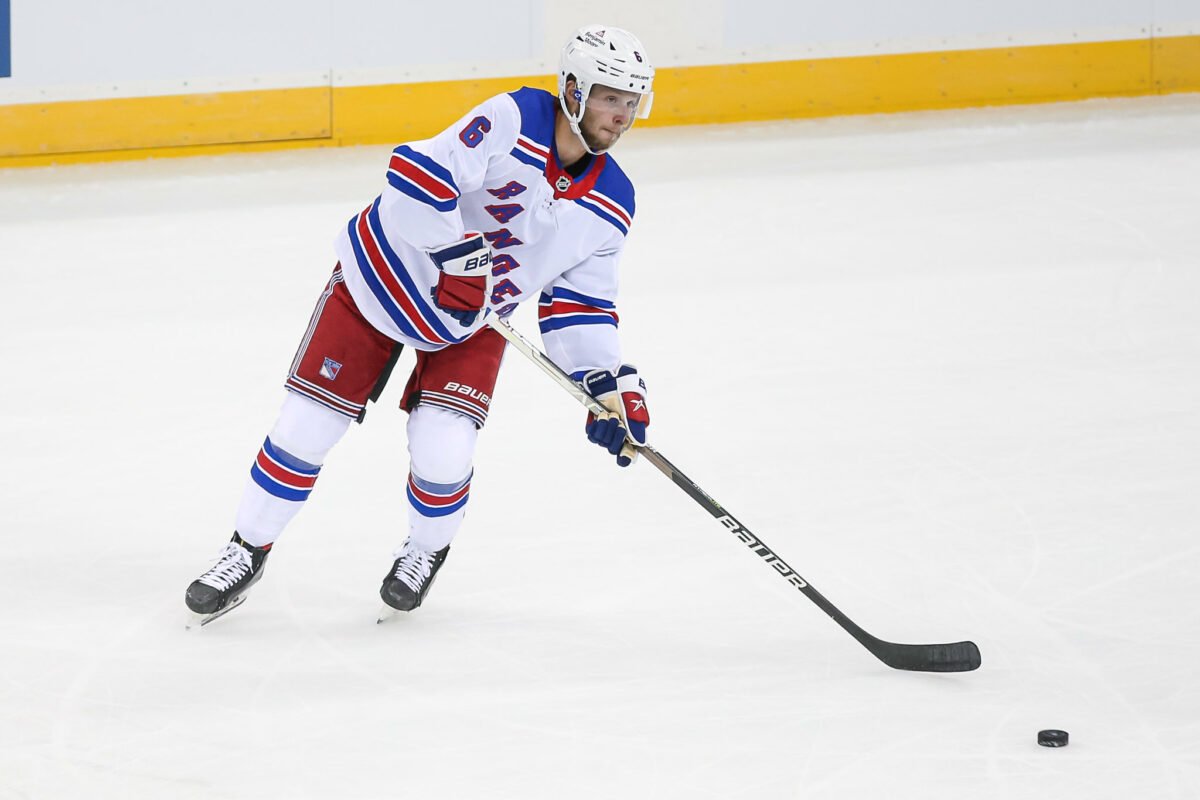
Many fans have been salivating over Jones’ potential since he arrived in April 2021 for a 10-game cameo with the Blueshirts, the third-round draft pick in 2019 signing his entry-level contract fresh off helping Massachusetts win the NCAA championship that season. With great speed and an innate ability to run a power play, some envisioned him joining Adam Fox, who would win the Norris Trophy that season in his second year, as pillars of the club’s backline for a decade or so.
Jones’ play during that initial foray into the NHL, as well as in 12 games last season, was mostly uneven, hardly surprising for a player who only turns 22 next month. That didn’t stop the hype surrounding him from growing last season and spiking this offseason, when the departure of veteran Patrik Nemeth in a trade created the opening next to Schneider.
Gallant Not Playing Favorites in Battle for Open Slot on Defense
Coach Gerard Gallant, though, wasted no time in throwing cold water on the idea that the battle for that spot is all but over in his introductory press conference Wednesday.
“I don’t know. Training camp will decide that,” Gallant said. “Schneider’s gonna be there, you know that. Top five’s there, and just play with that spot.”
Pressed further by a reporter who cryptically wouldn’t mention Jones’ name but wanted to know whether he was going into camp with the inside track in the competition, Gallant wasn’t any more forthcoming.
“I know who you’re talking about obviously, he’s played some games and he’s a good player, so, we’ll see what happens,” the coach said.
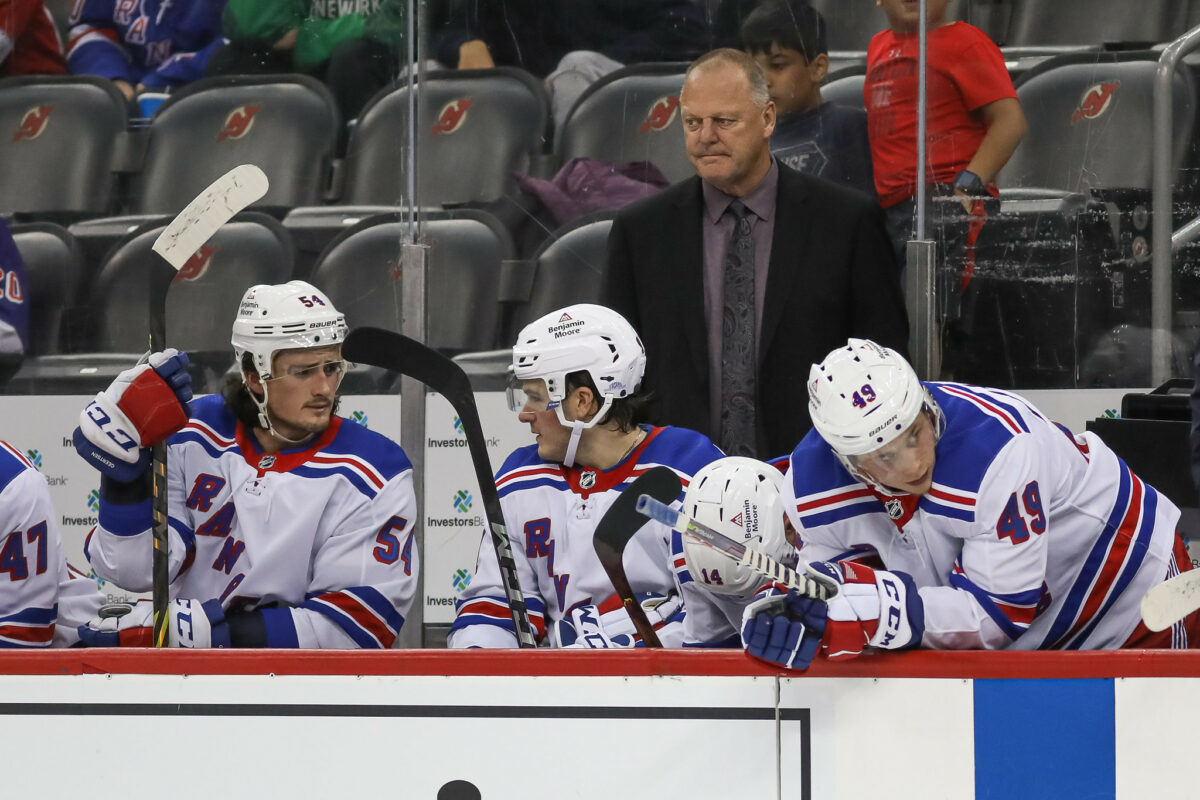
Those statements from Gallant, who’s been plain-spoken and mostly candid with the media in his year-plus behind the Rangers’ bench, should make it apparent that Jones is anything but a sure thing to be in the lineup Oct. 11 against the Tampa Bay Lightning. In fact, his comment about Schneider, while it could be nothing, might be an indication that Jones will face a tougher road to making the team than others vying for the spot.
That’s because the past year has laid bare the Rangers’ new organizational strategy in which they have undertaken a reshaping of the roster to make it bigger and brawnier. The hiring of Gallant aligns with that, as the coach has made no secret of his preference for a tougher, stronger, in-your-face group, which mirrors his style from his playing days.
Schneider fits that profile, the 6-foot-2, 210-pound right-hander having established himself as a rising presence on the Blueshirts’ defense after being called up from Hartford of the American Hockey League in January and playing 43 regular-season games, recording 11 points and a plus-5 rating. The 2020 first-round pick, who also played all 20 playoff games last season, delivered 60 hits and 52 blocked shots during the regular season. Schneider plays the physical, grinding game Gallant desires.
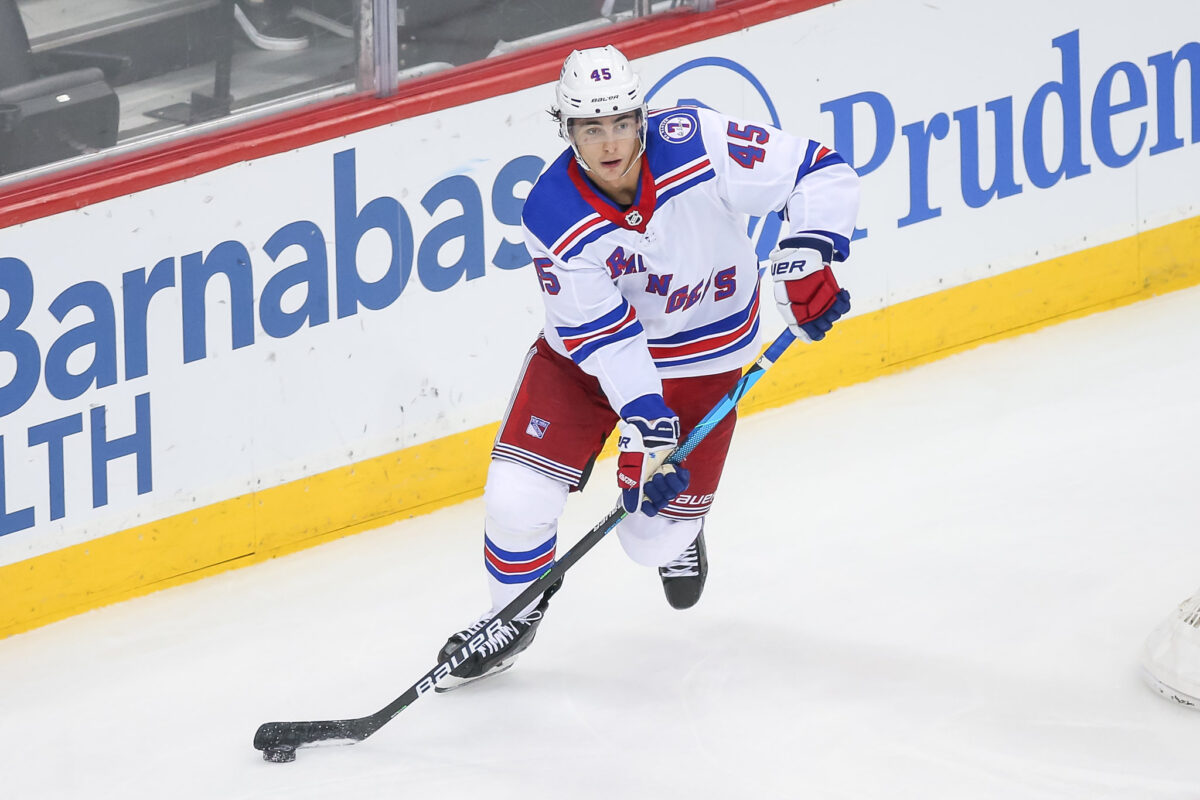
The coach particularly prefers that style for his defense corps. Gallant understands that the postseason in particular is a different animal, during which fewer penalties are called and the ability to get to the opponents’ net is often the difference between winning and losing a series.
Rangers Might Want to Emulate Lightning’s Huge Defense
That’s precisely what played out in the Eastern Conference Final against the Lightning last spring, when the Rangers saw their 2-0 series lead evaporate when they could no longer create sufficient traffic in front of Tampa goaltender Andrei Vasilevskiy. That was due in large part to Victor Hedman, Erik Cernak, Mikhail Sergachev, Jan Ruutta, Ryan McDonagh and Zach Bogosian, the redwood trees on the Lightning’s blue line who kept the Blueshirts’ forwards to the outside with their size and strength. Tampa Bay took the final four games while allowing five goals.
What does that mean for Jones? Maybe nothing. Maybe plenty, though. While Schneider appeared mostly comfortable from the get-go on Broadway, there also seemed to be a sense of permanence from the beginning, that he was here to stay and would be allowed to work through growing pains as he established himself. Schneider’s presence assists the Rangers, at least in Gallant’s thinking, in defending the front of the net the way Tampa Bay did.
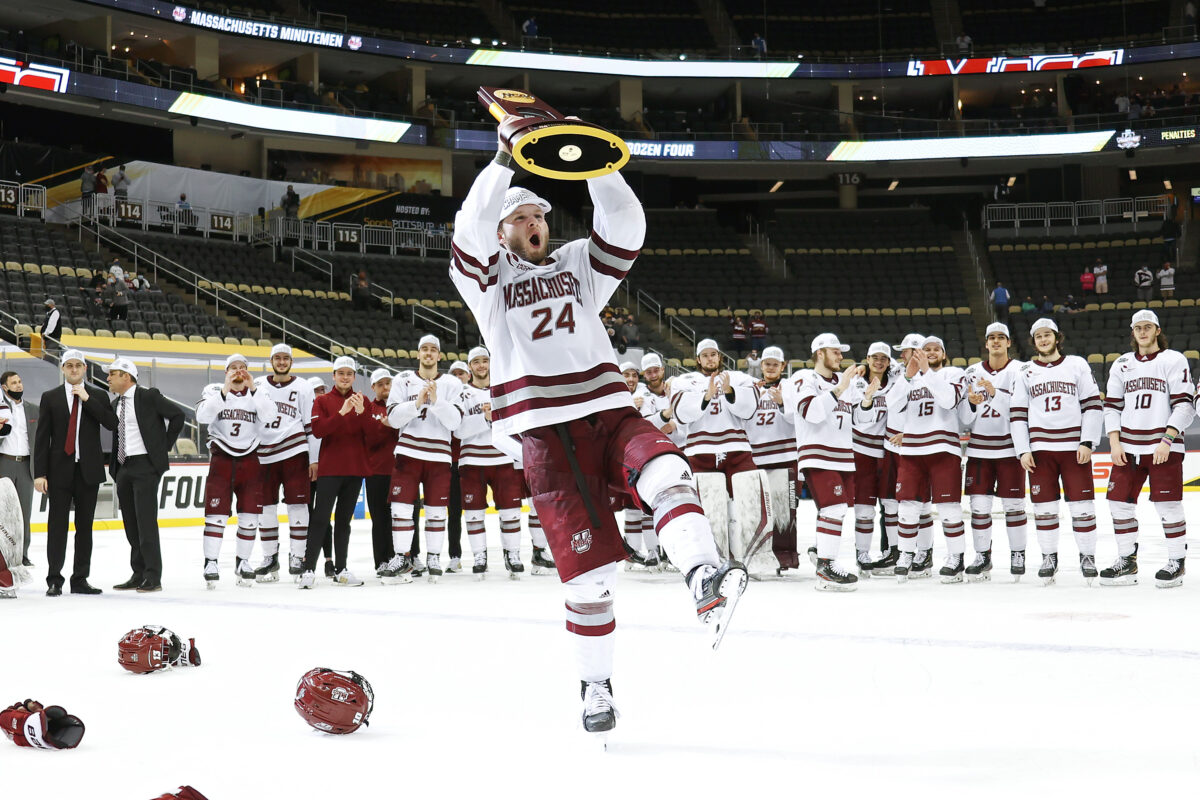
Will Jones, should he win the chance to be Schneider’s running mate out of camp, be given the same leash by Gallant, given his vastly different skill set? It’s worth noting that the Rangers just traded away 2018 first-round pick Nils Lundkvist, like Jones a well-regarded but smallish offensive defenseman who had asked to be dealt. While Lundkvist, who played 25 games for the Rangers last season before being sent down, was unlikely to make the team out of camp, the front office’s expediency in granting his request to go elsewhere may indicate that this type of player isn’t highly valued within the executive offices at Madison Square Garden.
So it’s fair to speculate that Jones might not be afforded the same level of patience that Schneider received, given the parting of ways with Lundkvist and the aforementioned organizational vision that’s now in place. Gallant and general manager Chris Drury further advanced that in the offseason by adding jagged center Vincent Trocheck and 200-pound fourth-liner Ryan Carpenter to the roster.
Related: Rangers’ Braden Schneider Must Avoid Sophomore Slump
Jones’ ability to defend remains a critical question in his bid to stick with the Rangers. At 5-11 and 185 pounds, can he handle himself in the defensive zone against big NHL forwards, and keep them away from the area in front of star goalie Igor Shesterkin? Jones’ supporters will point out that he’s about the same size as Fox. The latter, though, looks like a generational talent, relying on his incredible hockey instincts to neutralize bigger players with positioning and stick work. Does Jones possess similar attributes that will allow him to overcome his lack of bulk and forge an effective NHL career?
The hill for Jones with the Rangers may prove even higher to climb when another factor in brought into the equation: The skills he unquestionably does have that would win him the open spot might, ironically, not be in huge demand on this club.
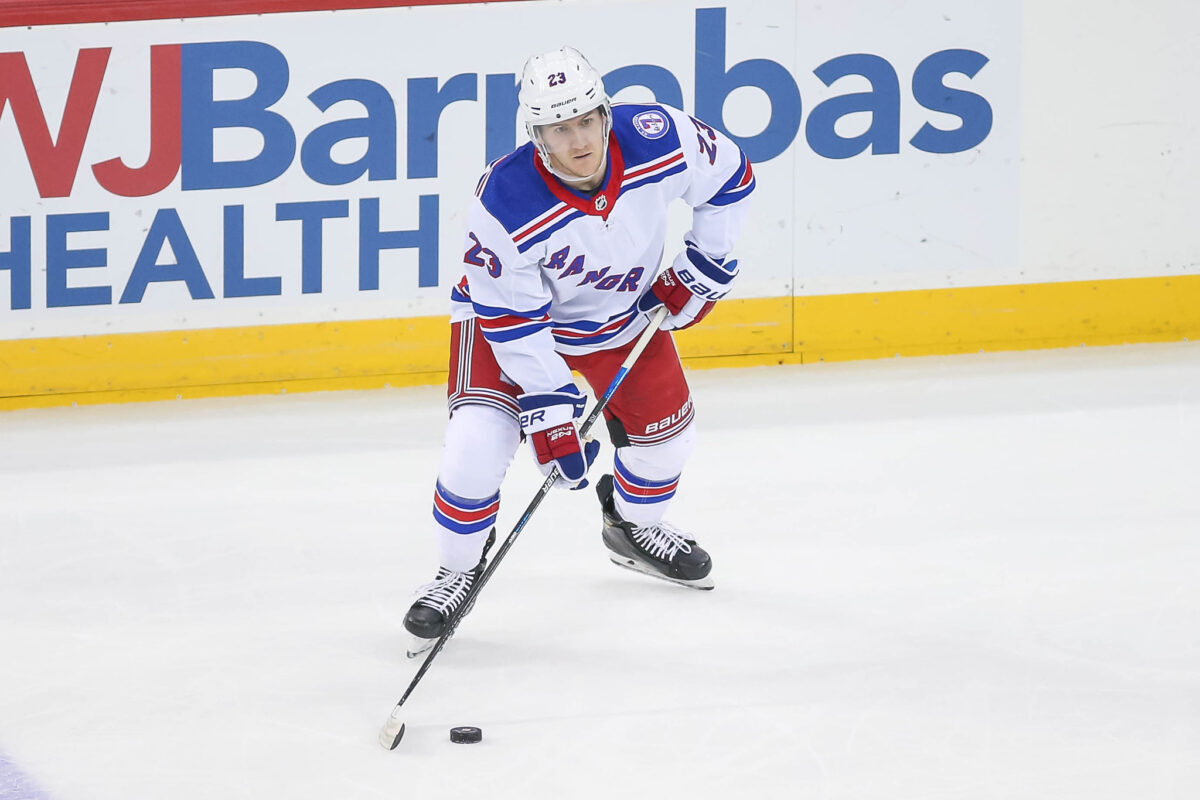
What Jones does as well as anything is quarterback the power play, his elite skating allowing him to create the quick lateral movement at the top of the zone that opens up passing and shooting lanes. It’s an attribute that’s sought throughout the league. Yet even if Jones makes the team, his opportunities to employ that skill are likely to be rare.
Rangers’ Power Play Has Little Room for Jones to Excel
That’s because Fox is among the NHL’s best power-play point men, helping to drive the Rangers’ potent unit to a 25.2 success rate in 2021-22 – fourth-best in the league. The club’s stacked No. 1 group with the man advantage, which generally includes Artemi Panarin, Mika Zibanejad and Chris Kreider along with Fox, often stays out close to the full two minutes.
The second unit, which consequently tends to get around 30 seconds or fewer, has Jacob Trouba on the point. That alignment works well because Trouba brings some offensive ability – he totaled a career-best 11 goals along with 28 assists last season – and leaves one of the team’s best defensemen on ice as the power play expires, with the opponent likely to immediately deploy one of its top two lines, both of which may have been on the bench in favor of penalty killers.
So where would that leave Jones? Perhaps he’d draw the brief second-unit assignment next to Trouba, but even if he did, his impact as a strong power-play QB would prove very limited. That means he’d need to contribute offensively at even strength in third-pair minutes.
It’s possible that could happen, as Jones would be on at times with a third line that might be comprised of Alexis Lafreniere, Filip Chytil and Kaapo Kakko, the Rangers’ best forward unit during the playoffs. However, he and Schneider would also log plenty of time with the fourth line, which isn’t going to be an offensively-inclined trio.
Yes, NHL defensemen are scoring more all the time. Eight blueliners recorded 68 or more points last season, and players like 2022 Norris winner Cale Makar of the Colorado Avalanche (86 points in 2021-22) and the Nashville Predators’ Roman Josi (96) routinely jump into the play in what’s almost a forward role. Yet there’s a significant difference between those eight players and Jones: All of them play among the top two pairs for their respective teams – which means they team mostly with their club’s best forwards – and all see significant power-play minutes. Most of those eight compiled nearly half of their points with the man advantage in 2021-22 – a situation Jones probably won’t be able to duplicate with the Rangers’ dangerous power play expected to follow the same strategy this season as it did the last one.
Size, Strength on Third Pair Could be Rangers’ Optimum Alignment
Fact is, the better identity for the third pair – especially on a Gallant-coached club – might be a big, stay-at-home duo. Putting Schneider with a similar player in theory makes the bottom blue line tandem, and one of the bottom six forward groups that will consistently play with it, less of a defensive liability during those players’ sparser minutes. It seems as if Jones might struggle to contribute in a meaningful way offensively in that situation, while his defense could be exposed.
It’s why the coaching staff will probably give a long look to Jones’ fellow defense prospect Matthew Robertson, the 6-4, 201-pound left-hander who the Rangers drafted one round ahead of Jones three years ago and who plays a game similar to Schneider’s. Holdover Libor Hajek, trying to find traction in his career, could also be an option ahead of Jones, and the club has brought in tough veteran Matt Bartkowski on a professional tryout offer. It’s also possible that the Rangers make a veteran addition to the roster before camp ends.
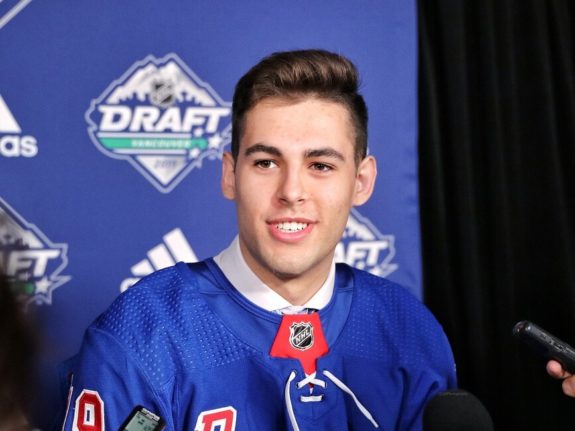
It’s tough to dismiss the potential of Jones, who recorded nine goals and 26 assists in 52 games with Hartford last season. The hype around him might be real. His hopes of delivering on that promise in a Rangers sweater, however, face major obstacles, ones that could end up being difficult to overcome even if he plays as well as he can during this fateful training camp that’s just commenced.